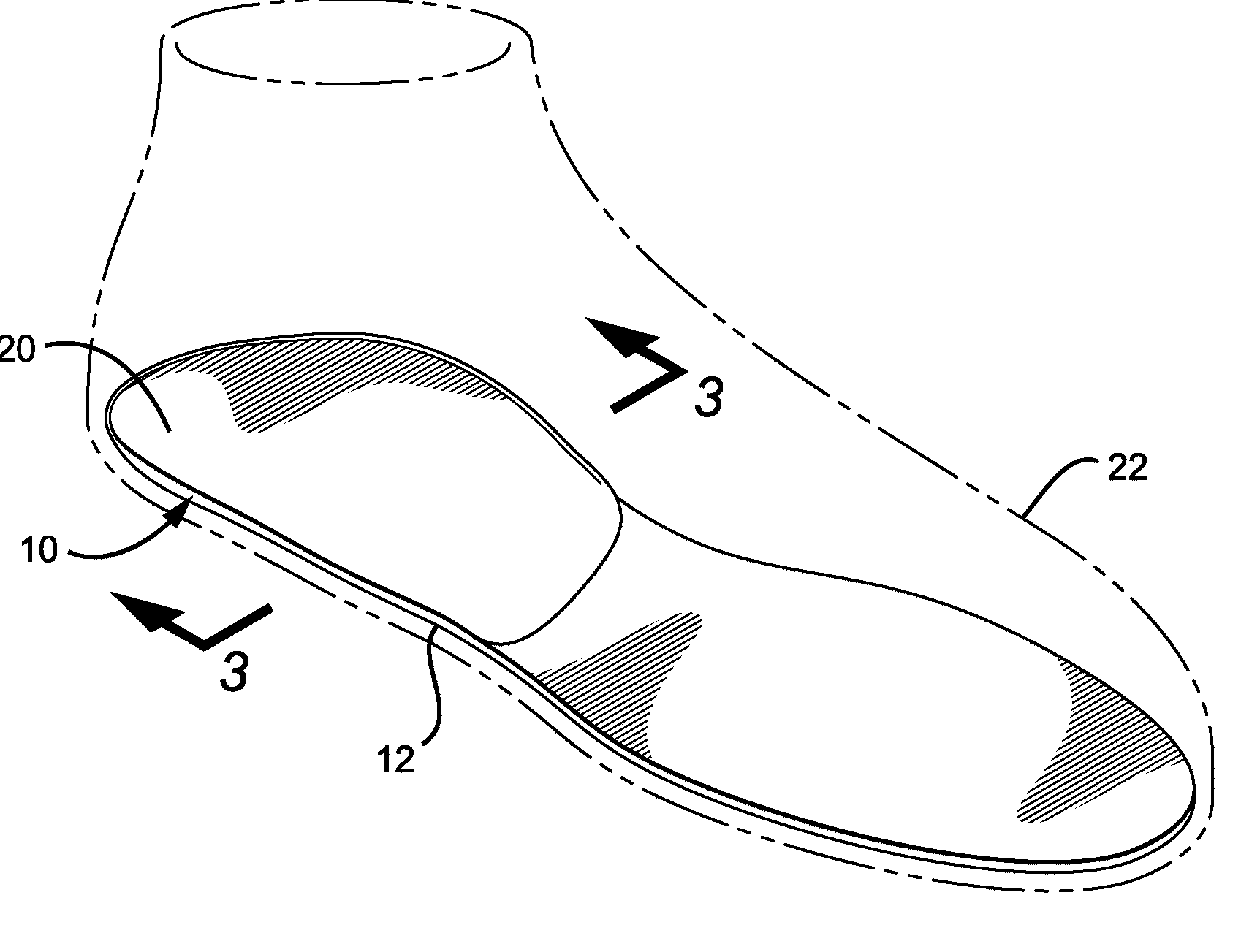Customized orthopedic sole-insert and method for making
a technology for orthopaedic inserts and inserts, applied in the field of orthopaedic inserts, can solve the problems of muscle fatigue, inability to work properly, and inability to control the alignment of muscles in the lower extremities, and achieve the effect of pliable and short tim
- Summary
- Abstract
- Description
- Claims
- Application Information
AI Technical Summary
Benefits of technology
Problems solved by technology
Method used
Image
Examples
embodiment
Semi-Rigid Shell Embodiment
[0059]FIG. 6 illustrates an exploded view of my insert 110. A bottom shell 112 is constructed of a pre-made shell having a contoured arch. Shell 112 is formed from a thin layer of fiberglass or alternatively is injection molded with a hard plastic material such as high density polyethylene. The top surface of shell 112 has a plurality of canals 114 that extend from aperture “A” as shown in FIG. 6 and FIG. 9. Aperture “A” extends from the top surface to the bottom surface of shell 112 as illustrated in FIG. 8. Aperture “A” is positioned in the arch area of the insert as shown in FIG. 10.
[0060]FIG. 8 illustrates a cross sectional view of insert 110 taken along line 8-8 of FIG. 7. Positioned upon the top surface of shell 112 is a sponge layer 116 for temporarily absorbing the hardening agent and for subsequent distribution in the manner described earlier for the soft-shell embodiment. Positioned upon sponge layer 116 is a formable layer 118 comprising a suff...
PUM
 Login to View More
Login to View More Abstract
Description
Claims
Application Information
 Login to View More
Login to View More - R&D
- Intellectual Property
- Life Sciences
- Materials
- Tech Scout
- Unparalleled Data Quality
- Higher Quality Content
- 60% Fewer Hallucinations
Browse by: Latest US Patents, China's latest patents, Technical Efficacy Thesaurus, Application Domain, Technology Topic, Popular Technical Reports.
© 2025 PatSnap. All rights reserved.Legal|Privacy policy|Modern Slavery Act Transparency Statement|Sitemap|About US| Contact US: help@patsnap.com



